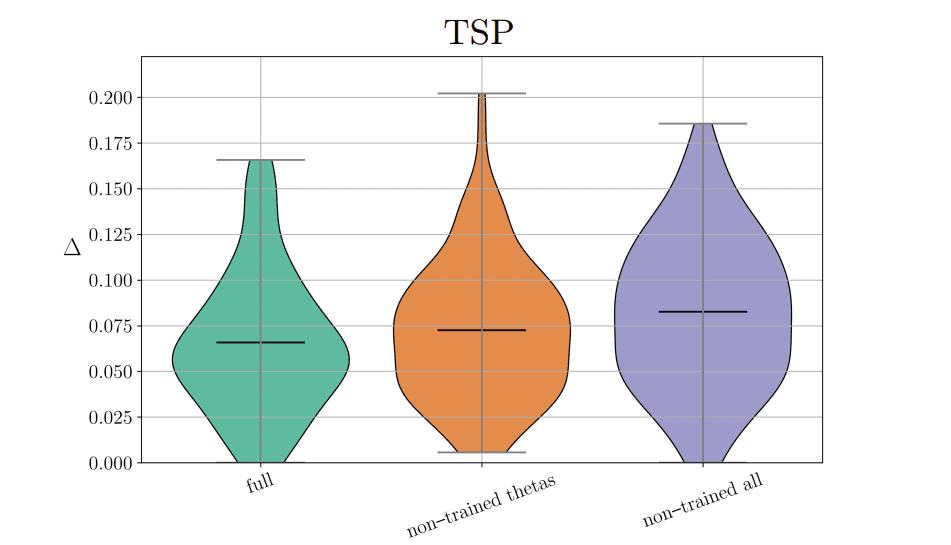Binary optimisation problems, crucial to fields from logistics to complex data analysis, present a significant computational challenge because the time required to find solutions increases exponentially with problem size. Alexander Makarovskiy from ORCA Computing, Mateusz Slysz and Łukasz Grodzki from the Poznań Supercomputing and Networking Center, along with Thorin Farnsworth and William R. Clements from ORCA Computing, introduce a new algorithm, the Bosonic Binary Solver, specifically designed to tackle these problems using emerging photonic quantum processors. The team’s variational approach utilises samples generated from an optical circuit, refining potential solutions with trainable classical processing, and iteratively improves results through a gradient-based training loop. Demonstrating high-quality solutions both in simulations and on real quantum hardware, this algorithm represents a promising step towards harnessing the scalability of photonic quantum computing for solving large-scale, real-world optimisation challenges.
Traditional computational methods decrease rapidly with increasing problem sizes. This hybrid classical-quantum approach uses samples from a quantum optical circuit, which are post-processed using trainable classical bit-flip probabilities, to propose candidate solutions. A gradient-based training loop finds progressively better solutions until convergence. The team validated the structure of the algorithm through rigorous testing and then evaluated its performance on a range of binary optimisation problems, using both simulations and real hardware.
Photonic Algorithm Optimizes Combinatorial Problem Solving
Scientists developed a novel algorithm, the Bosonic Binary Solver (BBS), designed to leverage the capabilities of near-term photonic processors for binary optimisation tasks. This hybrid classical-quantum approach utilises quantum optical circuits, combined with classical post-processing, to efficiently explore solution spaces and identify high-quality solutions. The work demonstrates a method for utilising photonic systems beyond traditional Boson Sampling, enabling application to a wider range of optimisation problems. The research focuses on time-bin photonic quantum processors, where single photons are sent sequentially into networks of optical delay lines with programmable coupling coefficients.
Experiments utilise a power-law architecture consisting of three sequential delay lines, designed to support long-range entanglement and maintain computational hardness despite a relatively low component count. Simulations and hardware implementations demonstrate the algorithm’s ability to tackle discrete optimisation tasks, including Knapsack optimisation, Tactical Deconfliction, and the travelling salesperson problem. The team implemented a system where photons interfere within the quantum optical circuit, creating an entangled state, and measurements collapse this state to return output locations. This approach allows BBS to reach the entire solution space and find improved solutions compared to existing methods. Importantly, BBS is not limited to quadratic unconstrained binary optimisation problems, nor does it have hardware restrictions on the types of cost functions it can address, offering lower implementation overheads. The team successfully demonstrates that this algorithm finds high-quality solutions to these complex problems, achieving optimal results for problem sizes up to 18 variables when implemented on real hardware. Notably, the algorithm’s performance complements existing methods like simulated annealing, often identifying optimal solutions for different problem instances, suggesting its value as a versatile addition to optimisation toolkits. The Bosonic Binary Solver distinguishes itself by its adaptability and scalability.
Unlike some quantum optimisation algorithms, it is not limited to specific problem formulations, avoiding encoding overheads and broadening its applicability. The algorithm’s design is particularly well-suited for problems where evaluating cost functions is straightforward, but the overall problem space is vast and computationally challenging. While acknowledging that hardware experiments involved a reduction in computational resources compared to simulations, the team successfully validated the algorithm’s functionality on physical quantum processors and demonstrated the potential of a ‘tiling’ method to extend its reach beyond the processor’s native size. Future work will likely focus on algorithmic improvements and exploring the full potential of the Bosonic Binary Solver as photonic processors continue to scale and become more powerful. This research establishes a promising pathway for leveraging photonic quantum computing to address large-scale, real-world optimisation challenges.

